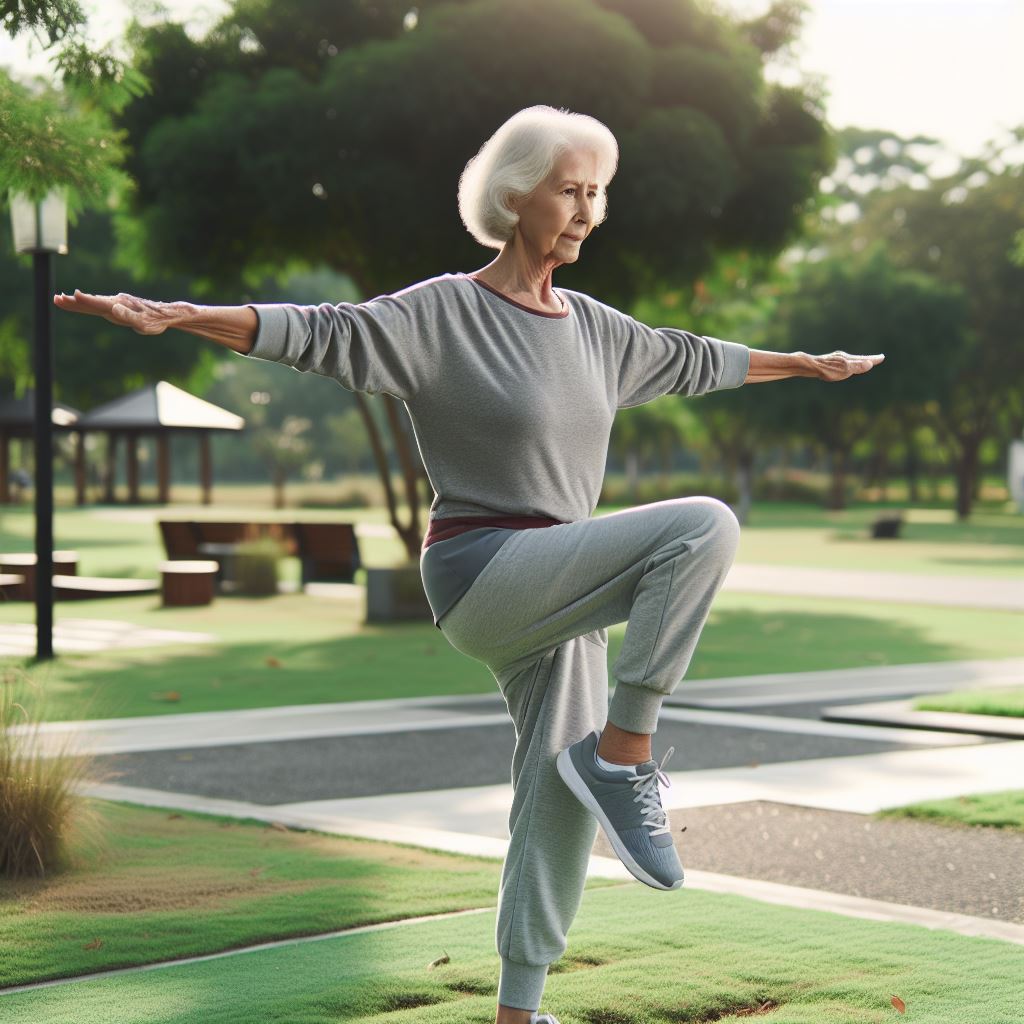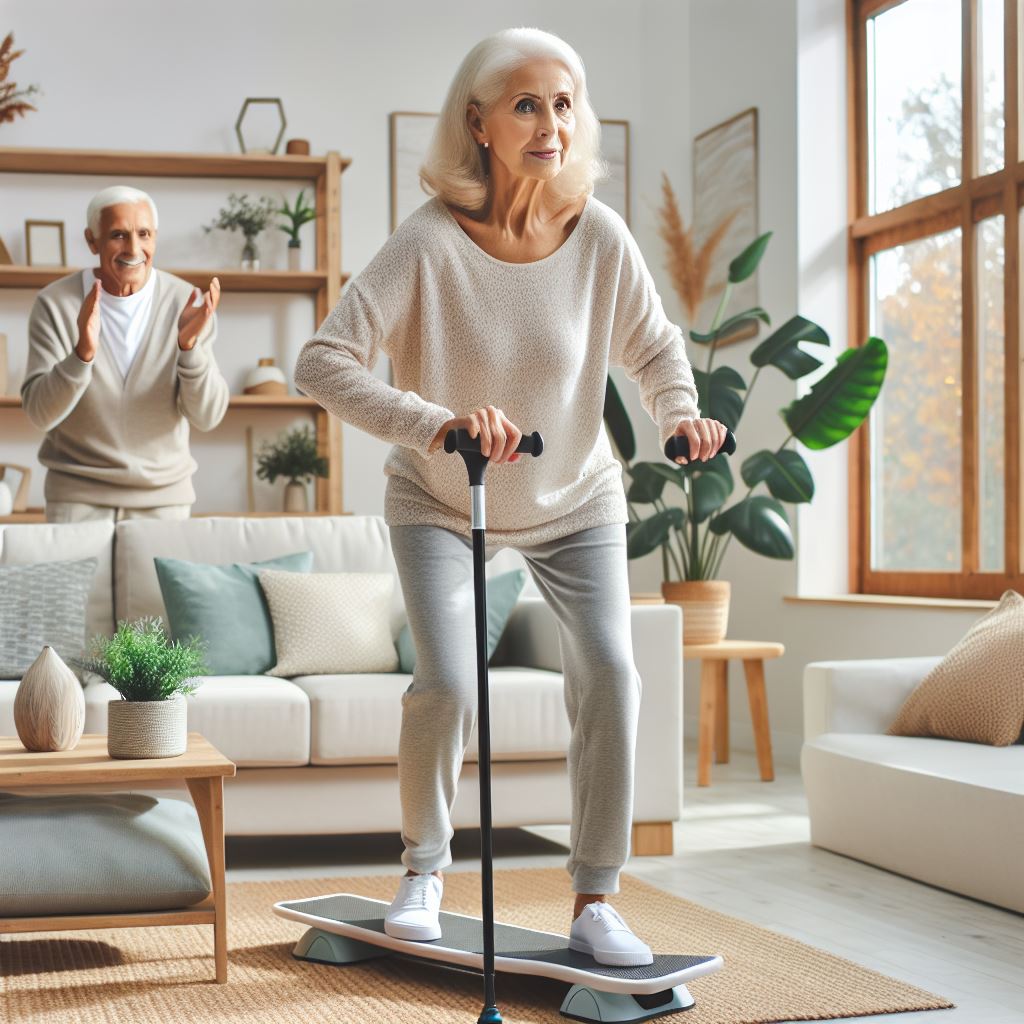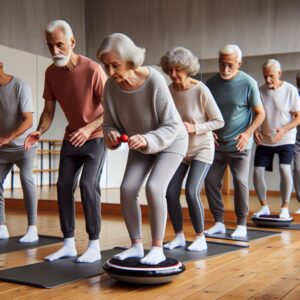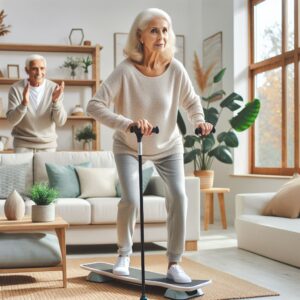Introduction
As we age, maintaining leg strength becomes increasingly important for overall health and mobility. Strong legs are crucial for performing daily activities and preventing falls, which are a leading cause of injury among seniors. This article explores the best leg strength exercises for seniors, emphasizing their role in fall prevention.
The Importance of Leg Strength for Seniors
Leg strength is vital for seniors as it directly impacts their ability to perform everyday tasks such as walking, climbing stairs, and getting up from a chair. Strong legs also contribute to better balance and stability, reducing the risk of falls and related injuries.
Statistics on Falls Among Seniors
According to the Centers for Disease Control and Prevention (CDC), one in four Americans aged 65 and older falls each year. Falls are the leading cause of fatal and non-fatal injuries among older adults, making it essential to address this issue through preventive measures such as leg strength exercises.
Benefits of Leg Strength Exercises
Engaging in regular leg strength exercises offers numerous benefits for seniors, including:
- Improved balance and coordination
- Enhanced mobility and independence
- Increased muscle mass and bone density
- Reduced risk of falls and related injuries
- Better overall physical and mental health
Understanding Fall Risks
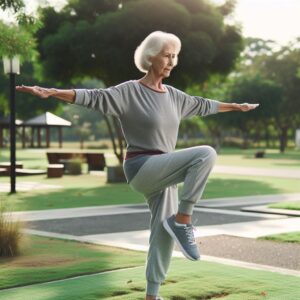
Common Causes of Falls in Seniors
Falls among seniors can result from various factors, including muscle weakness, poor balance, vision problems, and environmental hazards. Understanding these risks is the first step in preventing falls.
Muscle Weakness
As we age, muscle mass naturally decreases, leading to weaker muscles and reduced strength. This decline in muscle strength can make it more challenging to maintain balance and stability, increasing the risk of falls.
Poor Balance
Balance issues are common among seniors due to age-related changes in the inner ear, vision, and proprioception (the body’s ability to sense its position in space). Poor balance can make it difficult to navigate uneven surfaces or recover from a stumble, leading to falls.
Vision Problems
Age-related vision changes, such as cataracts, glaucoma, and macular degeneration, can impair depth perception and peripheral vision, making it harder to detect obstacles and navigate safely.
Environmental Hazards
Cluttered living spaces, poor lighting, slippery floors, and uneven surfaces can all contribute to falls. Identifying and addressing these hazards is crucial for creating a safe environment for seniors.
Impact of Falls on Health and Independence
Falls can lead to serious injuries such as fractures and head trauma, significantly impacting a senior’s health and independence. The fear of falling can also lead to reduced physical activity, further weakening muscles and increasing fall risk.
Physical Injuries
Common injuries resulting from falls include hip fractures, wrist fractures, and head injuries. These injuries can require lengthy recovery periods and may result in long-term disability or chronic pain.
Psychological Impact
The fear of falling can lead to a condition known as “fall phobia,” where seniors become overly cautious and limit their activities. This reduced activity can lead to further muscle weakness and decreased mobility, creating a cycle of increased fall risk.
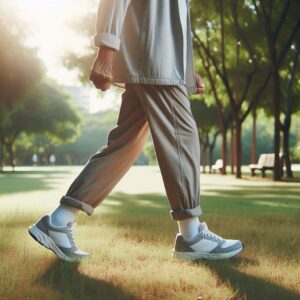
Loss of Independence
Serious injuries from falls can result in a loss of independence, requiring seniors to rely on caregivers or move to assisted living facilities. This loss of independence can significantly impact their quality of life and mental well-being.
How Leg Strength Reduces Fall Risk
Strong leg muscles improve balance and stability, making it easier to navigate daily activities and reducing the likelihood of falls. Regular leg strength exercises can enhance muscle tone, coordination, and confidence.
Improved Balance and Stability
Leg strength exercises target the muscles responsible for maintaining balance and stability, such as the quadriceps, hamstrings, and calves. Strengthening these muscles helps seniors maintain their center of gravity and recover more easily from stumbles.
Enhanced Coordination
Exercises that involve multiple muscle groups and movements, such as lunges and step-ups, improve coordination and proprioception. Better coordination helps seniors navigate obstacles and uneven surfaces more safely.
Increased Confidence
Regular exercise can boost confidence and reduce the fear of falling. Seniors who feel more confident in their physical abilities are more likely to stay active and engage in social activities, further enhancing their overall well-being.
Key Leg Strength Exercises for Seniors
Warm-Up Exercises
Importance of Warming Up
Warming up prepares the muscles for exercise, reducing the risk of injury. Simple warm-up routines can include marching in place, gentle stretching, and ankle circles.

Simple Warm-Up Routines
- Marching in Place: Stand with feet hip-width apart and march in place, lifting your knees high and swinging your arms. Continue for 2-3 minutes to increase your heart rate and warm up your leg muscles.
- Gentle Stretching: Perform gentle stretches for the major muscle groups in your legs, such as the quadriceps, hamstrings, and calves. Hold each stretch for 15-30 seconds, avoiding any bouncing or jerking movements.
- Ankle Circles: Sit in a chair and lift one foot off the ground. Rotate your ankle in a circular motion, first clockwise and then counterclockwise. Repeat with the other foot. This exercise helps improve ankle flexibility and mobility.
Core Leg Strength Exercises
1. Chair Squats
How to Perform Chair Squats:
- Stand in front of a sturdy chair with feet shoulder-width apart.
- Slowly lower yourself into a sitting position, keeping your back straight and knees aligned with your toes.
- Pause briefly, then stand back up.
Benefits: Chair squats strengthen the quadriceps, hamstrings, and glutes, improving overall leg strength and balance.
Tips for Safety:
- Use a chair with armrests for added support if needed.
- Keep your weight on your heels and avoid letting your knees extend past your toes.
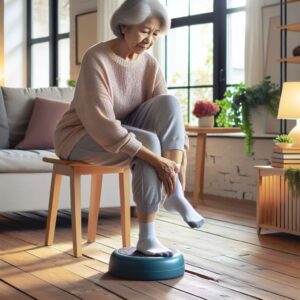
2. Heel Raises
Step-by-Step Guide to Heel Raises:
- Stand with feet hip-width apart, holding onto a chair or counter for support.
- Slowly rise onto your toes, lifting your heels off the ground.
- Hold for a few seconds, then lower back down.
Benefits: Heel raises target the calf muscles, enhancing stability and balance.
Tips for Safety:
- Perform the exercise slowly and with control to avoid straining your muscles.
- Gradually increase the number of repetitions as your strength improves.
3. Leg Lifts
Different Variations of Leg Lifts:
- Standing Leg Lifts: Stand behind a chair, lift one leg to the side, then lower it back down. Repeat on the other side.
- Seated Leg Lifts: Sit in a chair, lift one leg straight out, hold for a few seconds, then lower it back down. Repeat with the other leg.
Benefits: Leg lifts strengthen the hip flexors, quadriceps, and glutes, contributing to better mobility and balance.
Tips for Safety for Leg Strength Exercise for Seniors:
- Keep your movements slow and controlled to avoid injury.
- Use a resistance band around your legs for added challenge.
4. Step-Ups
How to Safely Perform Step-Ups:
- Stand in front of a step or low platform.
- Step up with one foot, then bring the other foot up to meet it.
- Step back down one foot at a time.
Benefits: Step-ups improve leg strength, coordination, and cardiovascular fitness.
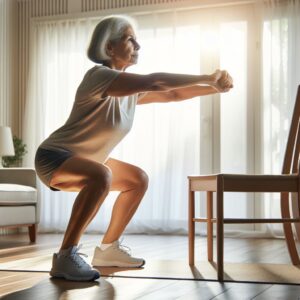
Tips for Safety:
- Use a sturdy step or platform that is not too high.
- Hold onto a railing or chair for support if needed.
5. Lunges
Proper Technique for Lunges:
- Stand with feet hip-width apart.
- Step forward with one leg, lowering your hips until both knees are bent at a 90-degree angle.
- Push back up to the starting position and repeat with the other leg.
Benefits: Lunges target the quadriceps, hamstrings, and glutes, enhancing leg strength and balance.
Tips for Safety:
- Keep your back straight and avoid leaning forward.
- Use a chair or wall for support if needed.
Balance and Flexibility Exercises
1. Standing on One Leg
Improving Balance and Coordination:
- Stand near a chair or wall for support.
- Lift one foot off the ground and balance on the other leg.
- Hold for as long as possible, then switch legs.
Progression Tips: Start with short durations and gradually increase the time as your balance improves.
Benefits: Standing on one leg improves balance, coordination, and leg strength.
2. Toe and Heel Walks
Enhancing Balance and Leg Strength:
- Walk forward on your toes for a few steps, then switch to walking on your heels.
- Repeat for several rounds.
Incorporating into Daily Routine: Toe and heel walks can be done while moving around the house, making them easy to integrate into daily activities.
Benefits: Toe and heel walks strengthen the muscles in the feet and lower legs, improving balance and stability.
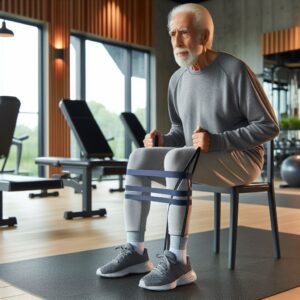
3. Seated Marches
Gentle Exercise for Hip Flexors:
- Sit in a chair with feet flat on the ground.
- Lift one knee towards your chest, then lower it back down.
- Repeat with the other leg.
Suitable for All Fitness Levels: Seated marches are a low-impact exercise that can be performed by seniors of all fitness levels.
Benefits: Seated marches improve hip flexor strength and mobility, contributing to better balance and stability.
Creating a Safe Exercise Environment
Choosing the Right Footwear
Wearing supportive, non-slip shoes is essential for preventing falls and providing stability during exercises. Look for shoes with good arch support, cushioning, and a firm grip on the sole. Avoid wearing slippers or shoes with smooth soles that can increase the risk of slipping.
Ensuring a Clutter-Free Space
A clutter-free exercise area is crucial for safety. Remove any obstacles, such as loose rugs, cords, or furniture, that could cause tripping. Ensure the space is well-lit to help you see clearly and avoid any potential hazards.
Using Supportive Equipment
Consider using supportive equipment to enhance your workout and provide additional stability. Items such as resistance bands, light weights, stability balls, and chairs can be helpful. Make sure any equipment you use is in good condition and appropriate for your fitness level.
Tips for Staying Motivated
Setting Realistic Goals
Setting realistic and achievable goals is key to staying motivated. Start with small, manageable goals and gradually increase the intensity and duration of your exercises as your strength improves. Celebrate your progress, no matter how small, to keep yourself motivated.
Tracking Progress
Keeping track of your progress can help you stay motivated and see how far you’ve come. Use a journal or an app to record your exercises, repetitions, and any improvements you notice. Tracking your progress can also help you identify areas where you may need to adjust your routine.
Incorporating Social Activities
Exercising with others can make your workouts more enjoyable and provide additional motivation. Consider joining a group exercise class, finding a workout buddy, or participating in community fitness programs. Social interaction can make exercising more fun and help you stay committed to your routine.
Conclusion
Maintaining leg strength is essential for seniors to prevent falls and stay active and independent. Incorporating these exercises into your routine can significantly improve your balance, stability, and overall quality of life. Start today and take the first step towards a stronger, safer future.
Recap of Benefits
To recap, the benefits of leg strength exercises for seniors include:
- Improved balance and coordination
- Enhanced mobility and independence
- Increased muscle mass and bone density
- Reduced risk of falls and related injuries
- Better overall physical and mental health
Encouragement to Start Today
It’s never too late to start improving your leg strength. Begin with the exercises outlined in this article and gradually build up your routine. Remember, consistency is key, and even small efforts can lead to significant improvements over time.
Resources for Further Reading
For more information on leg strength exercises and fall prevention, consider exploring the following resources:
- National Institute on Aging
- Centers for Disease Control and Prevention
- Mayo Clinic
I hope this guide helps you understand the importance of leg strength exercises for seniors and provides you with the tools and motivation to get started. If you have any questions or need further assistance, feel free to ask!
